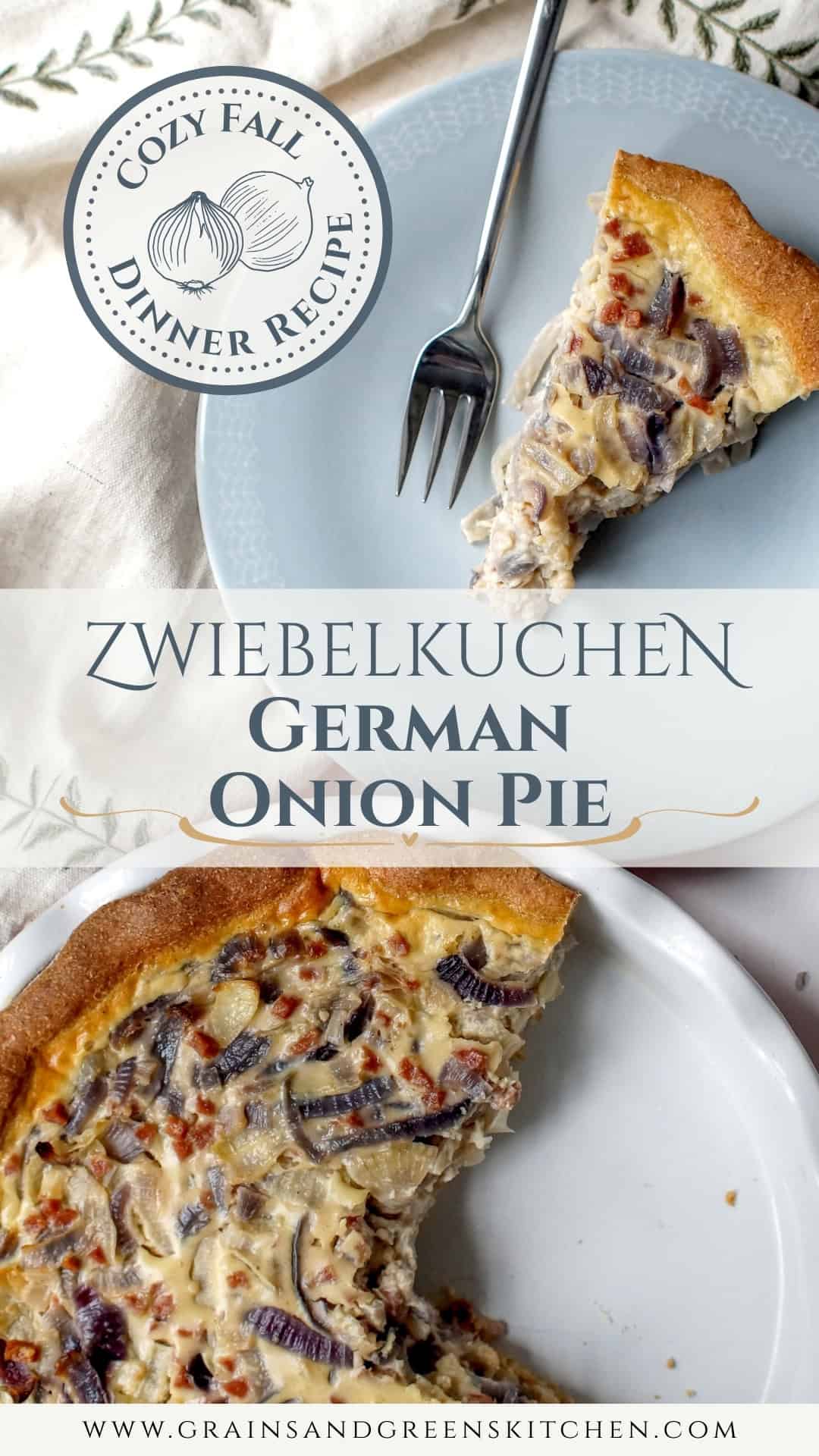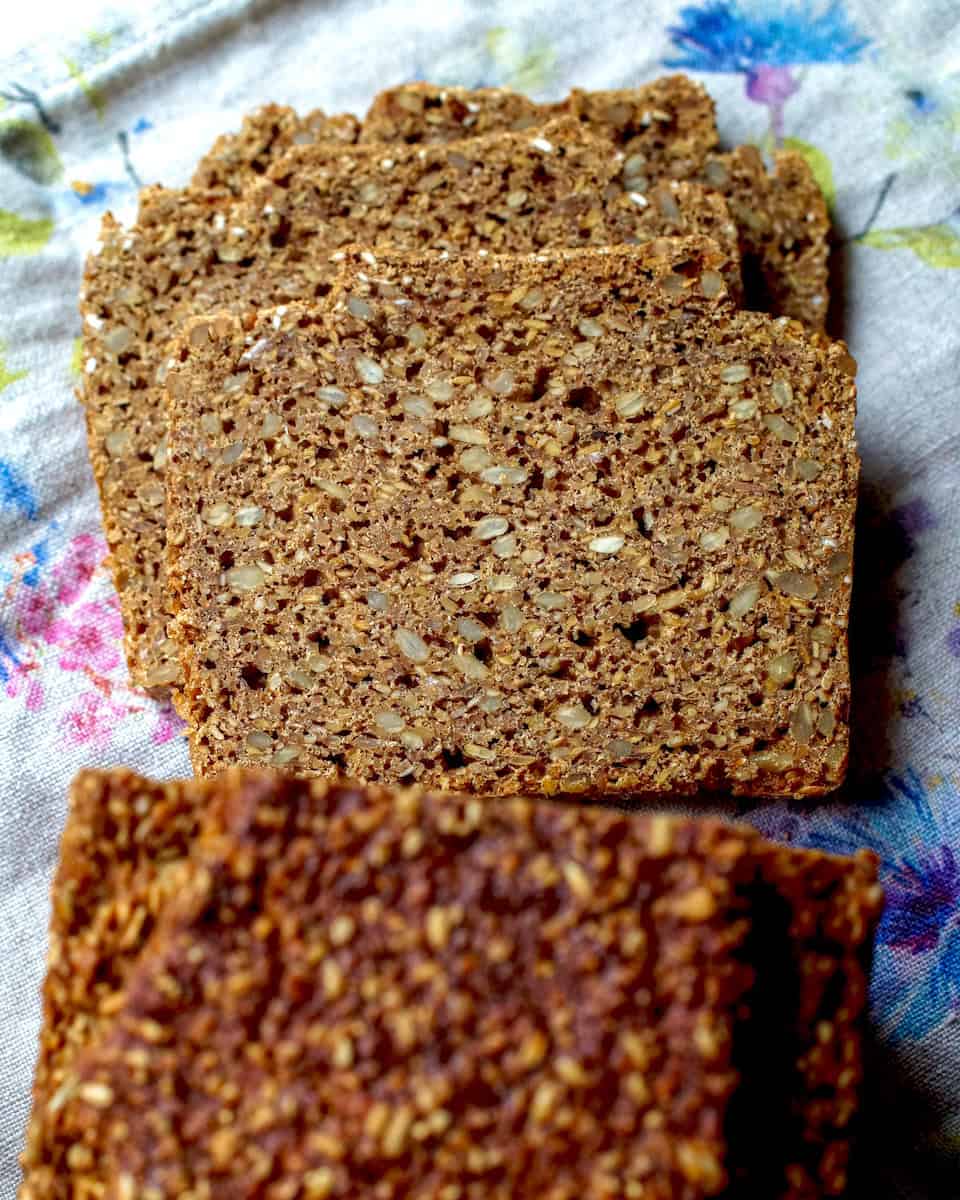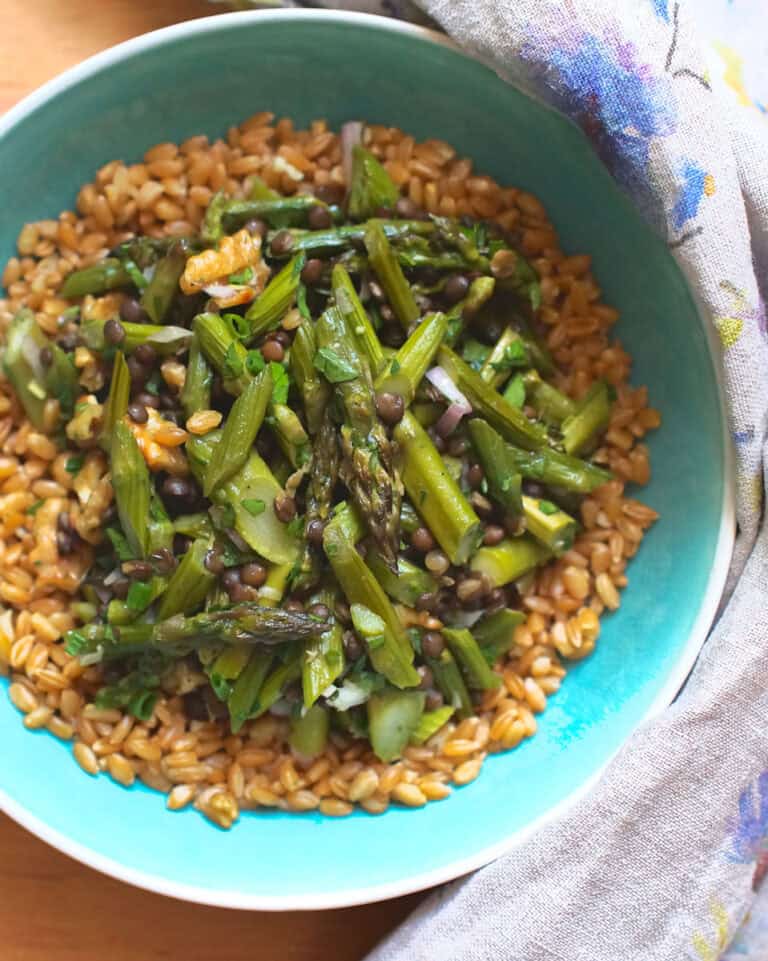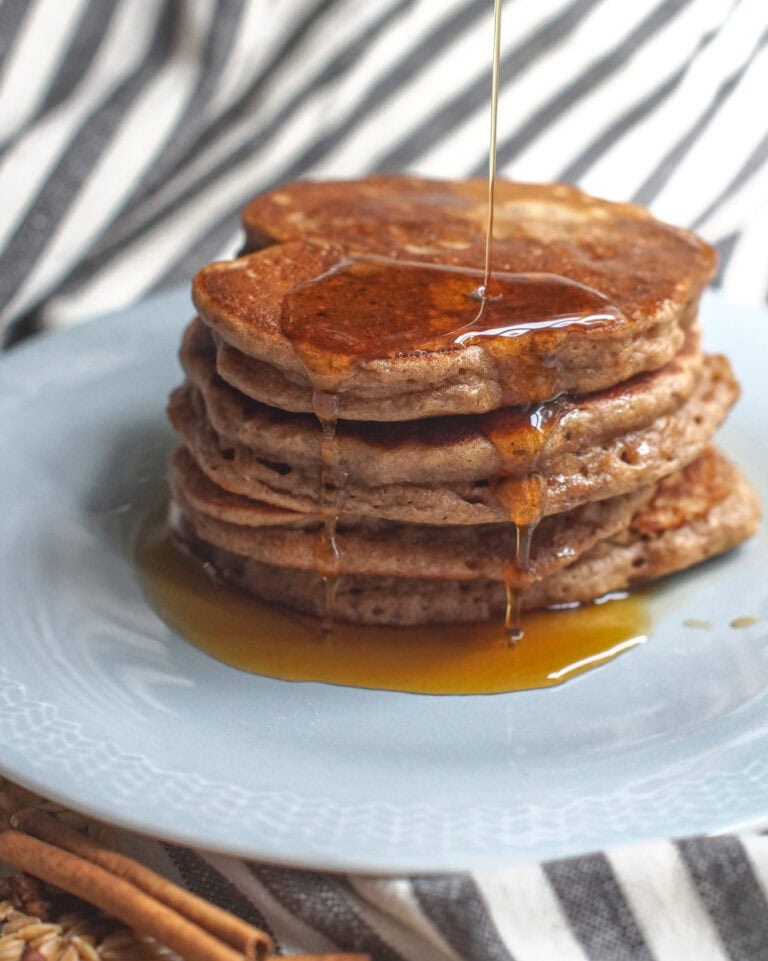Zwiebelkuchen — German Onion Pie with Freshly Milled Flour
Traditional German Zwiebelkuchen is a soft, savory and deeply satisfying onion pie with chopped bacon and a velvety smooth, spiced egg and cream custard. It’s the kind of dish you keep coming back to, again and again.
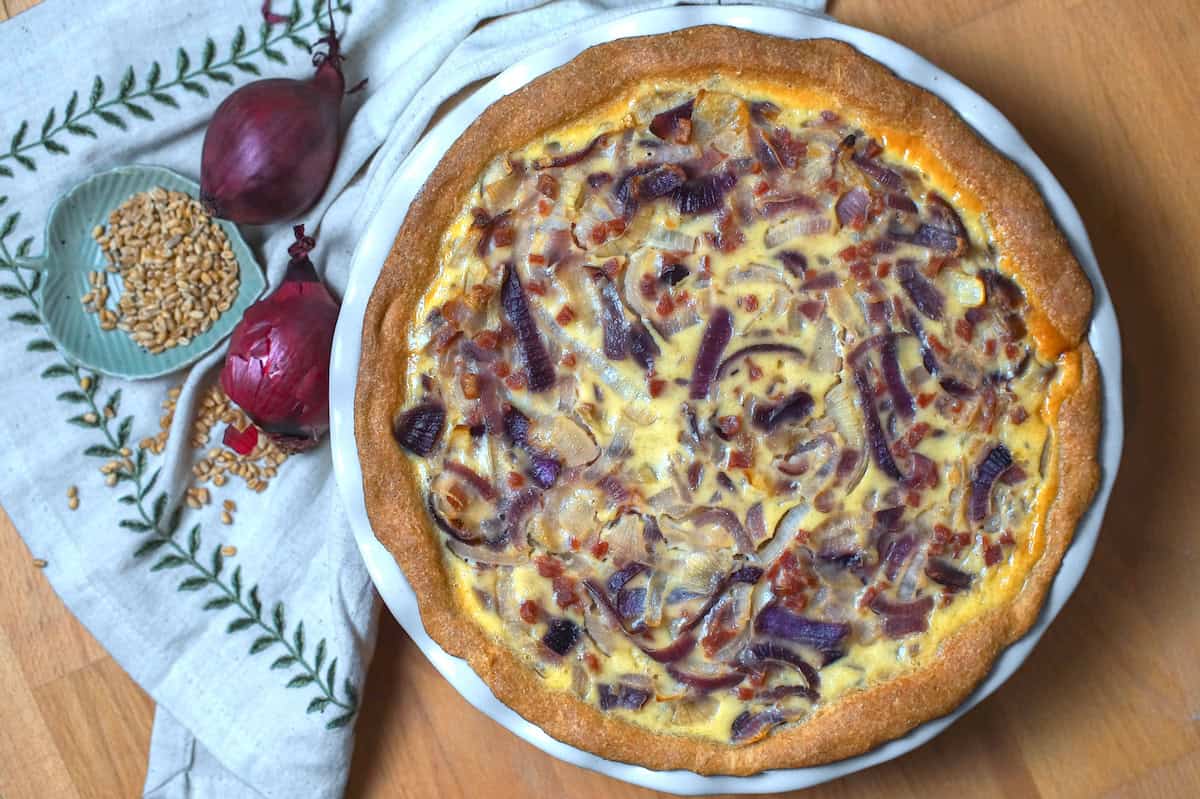

Zwiebelkuchen is a traditional German dish that usually gets overlooked. And unfairly so.
At first glance, it may seem like just another quiche, easily brushed aside, no big deal, right? Wrong.
Even though German Zwiebelkuchen is closely related to other, well-known traditional dishes of neighboring countries, it is distinctly different. The filling includes onions, bacon and eggs, but no cheese, so it’s not a French quiche. It’s not thin and crispy, so not like Alsatian Flammkuchen. And even though the best English translation would be onion pie, the soft, yeasted dough is far from a shattering, flaky pie crust.
Zwiebelkuchen then, being soft, savory, and deeply satisfying, is in a class all by itself. It literally translates to onion cake, which gives you a much better idea of what to expect:
A lightly enriched, salty soft-wheat dough forms the bready base. It’s filled with softened, sweet’n savory onions, bacon bits, and a velvety-smooth, rich egg and cream custard.
It’s a humble dish in its simplicity, but one that packs a seriously satisfying punch.
Why You’ll Love This Zwiebelkuchen Recipe
I love whole grain dinner recipes, especially when they’re this cozy and satisfying. Tucking all those sweet, salty onions into a soft, pillowy fresh-flour dough makes for the perfect hearty fall meal.
Using fresh-milled or whole grain flour for the crust not only adds flavor and texture, but also bumps up the nutrition. You get more fiber, micronutrients, and lasting satisfaction, without sacrificing any of the comfort-food appeal.
I’ve always thought onions were a bit magical. With just a little heat and butter, their sharpness melts into deep, complex sweetness. They’re humble, affordable, but absolutely packed with umami.
German onion pie also happens to be a great make-ahead dish, and leftovers are just as welcome for brunch or lunch the next day.
Tools You May Need
Ingredients and Substitutions
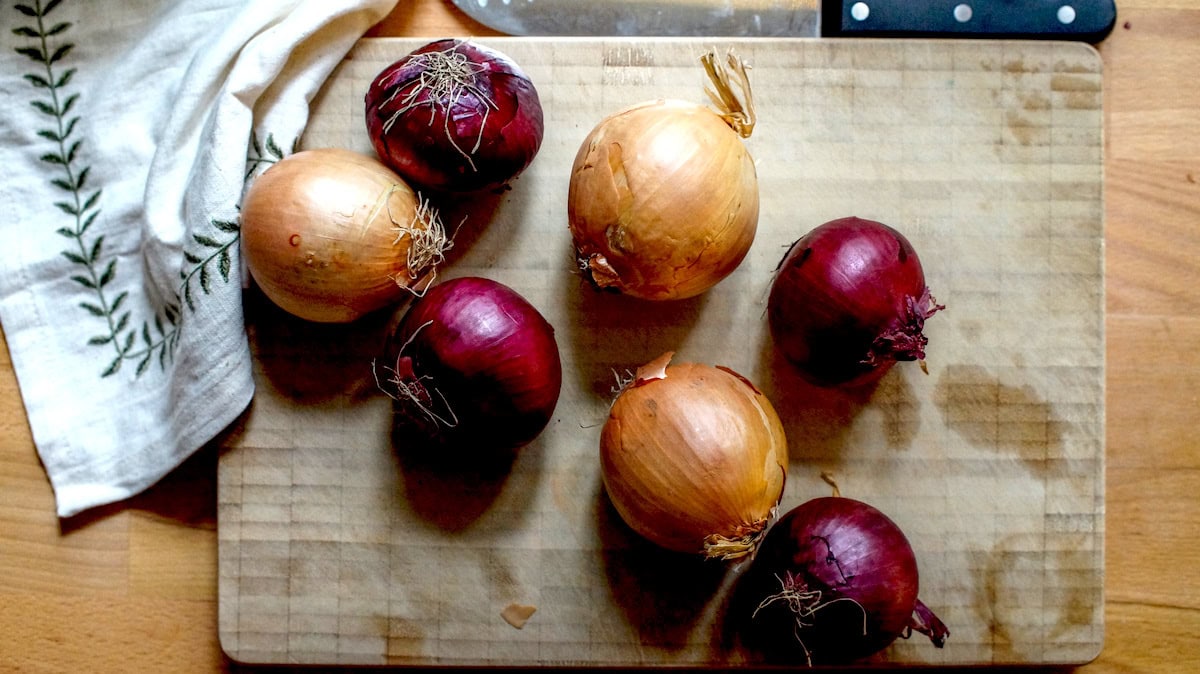

Freshly Milled Soft-Wheat Flour
Choose any variety of soft wheat or spelt berries and mill them on the finest setting.
If you don’t mill your own flour (yet), use store-bought whole grain spelt flour. In Europe (and much of the rest of the world), most store-bought whole wheat flours are made from soft wheat and can be swapped in.
Onions
Yellow onions are the traditional choice, but I’m just too smitten with red onions. I used half red, half yellow — use what you have.
Bacon
To me, bacon is a must in Zwiebelkuchen — but you can skip it if necessary. I use a vegan, diced bacon alternative for a vegetarian pie.
Heavy Cream, Sour Cream, or Crème Fraîche
You’ll want something rich and not too thin. It’s up to you whether you want to lean sweet (heavy cream) or tangy (sour cream or crème fraîche) — both go well with onions.
Nutmeg
A pinch of nutmeg rounds off the egg custard, even though you won’t be able to pinpoint the exact spice. Freshly grated tastes best, but the pre-ground stuff will do in a pinch.
Caraway Seeds
Whether or not caraway belongs in onion pie is a highly regional matter. Some people swear by it, others prefer to skip it. It’s a love it or leave it spice — it’s up to you!
For the most intense flavor, use whole caraway seeds and sprinkle them across the top before baking. If you prefer a more balanced flavor, mix ground caraway into the egg custard.
How to Make Zwiebelkuchen (Step-by-Step)
01
Make the Dough
Weigh out soft wheat berries and mill them on the finest setting of your grain mill.
Add the salt, sugar and instant yeast, and give the dry ingredients a quick mix before you add the water and bring everything together into a shaggy dough.
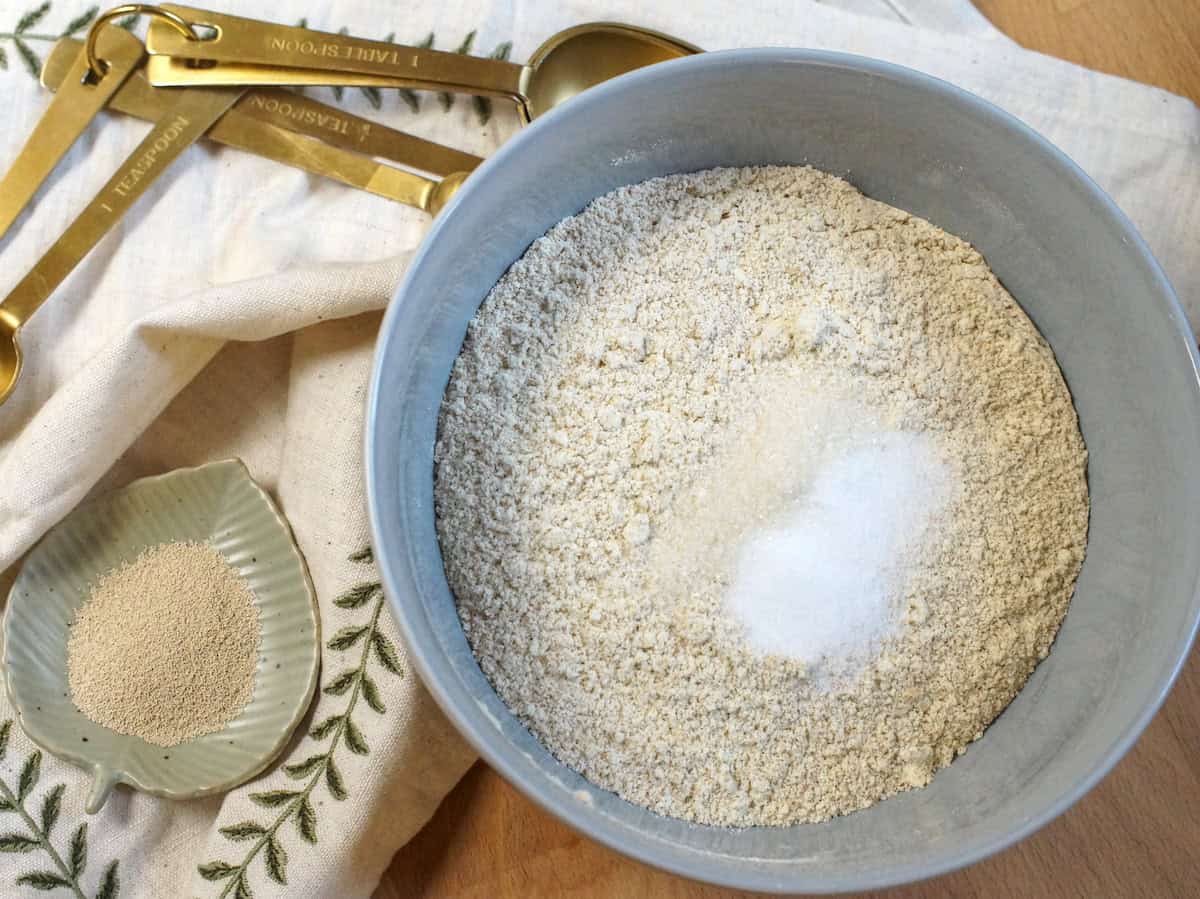
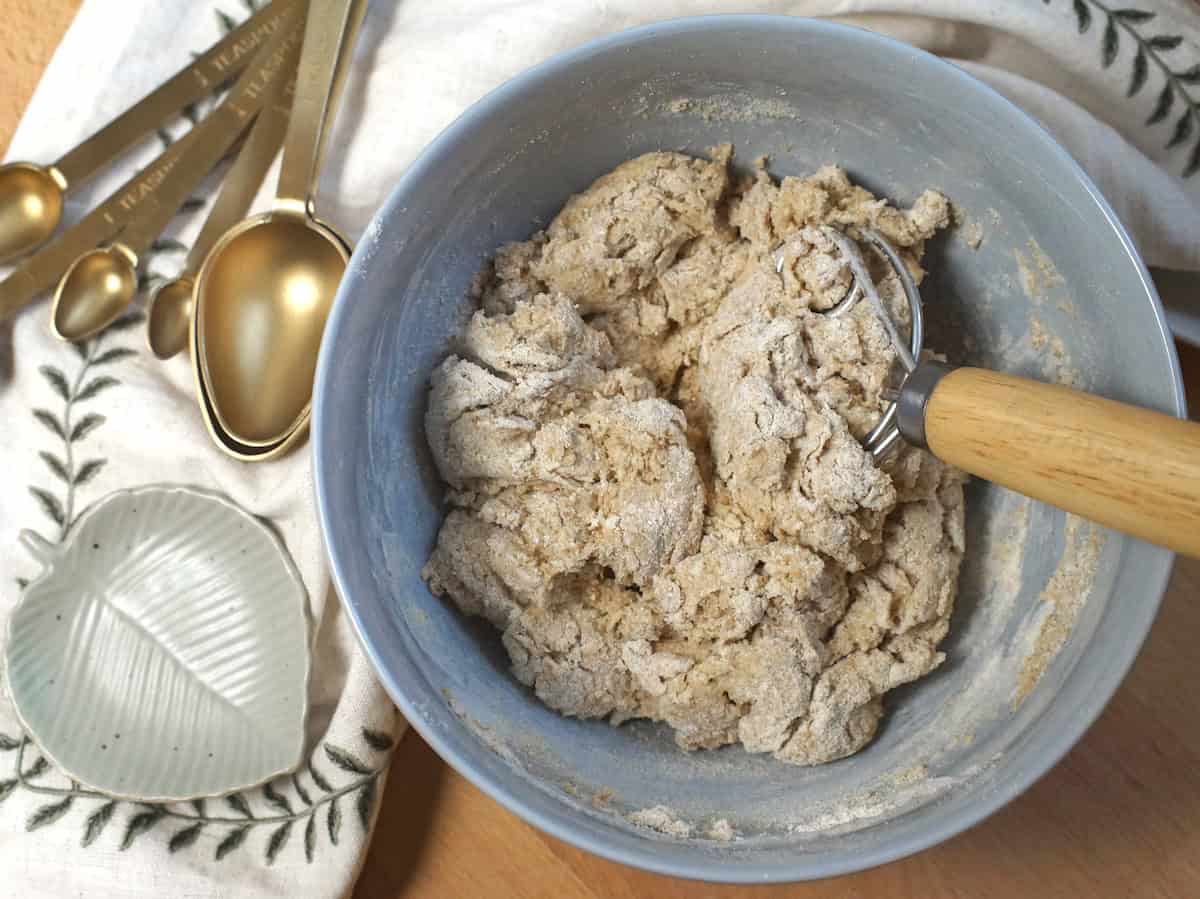
Knead in the softened butter until fully incorporated and the dough turns soft and elastic. It will be sticky — that’s okay! Use a bench scraper to gather the dough into a ball, place it back in the bowl, cover, and let it rise for 30-60 minutes.

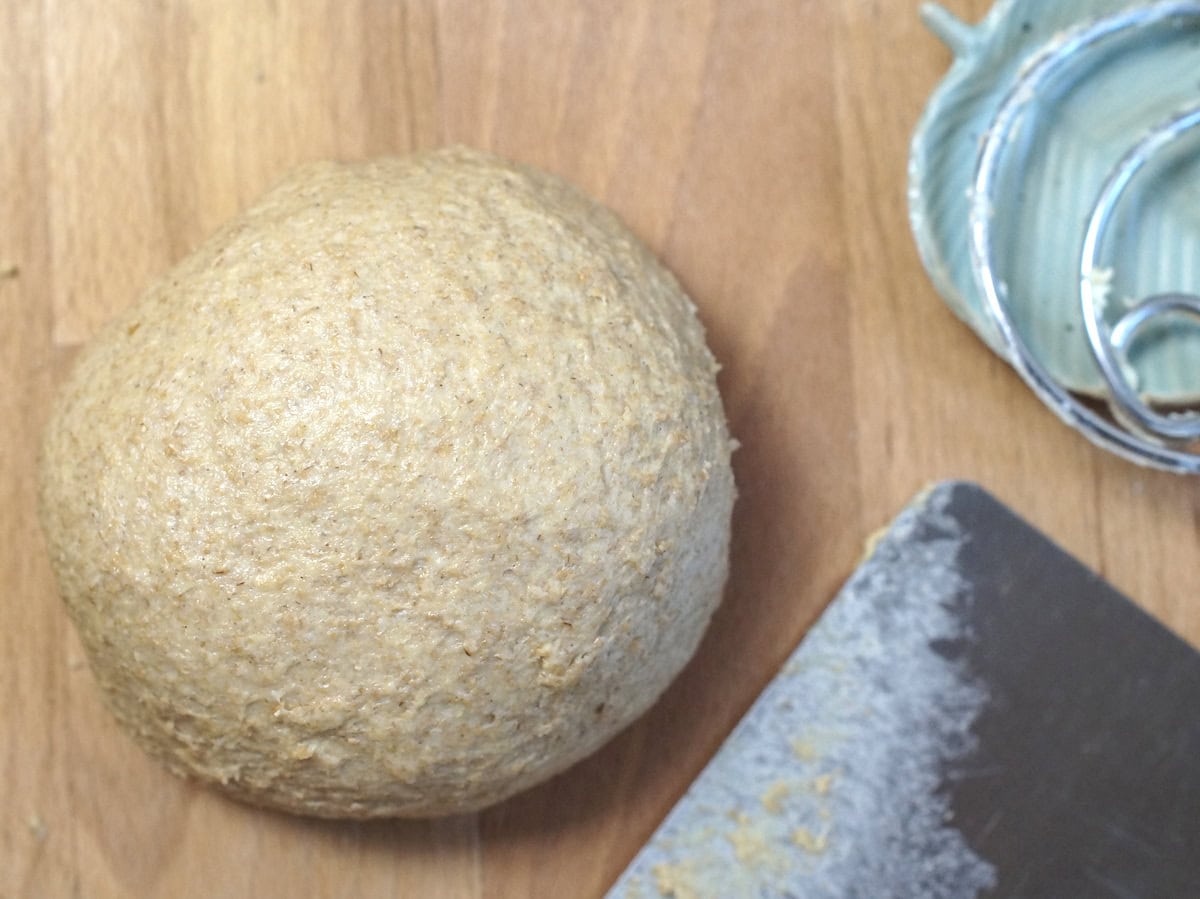
02
Cook the onions
Peel and chop the onions and dice the bacon if necessary. In a large frying pan, heat the butter over medium low heat. Add the onions and bacon and cook them low and slow. You’ll want the onions to turn soft and sweet, but not mushy or browned. It may take a while. Enjoy the aroma and roll out the dough while you wait. (And maybe pour a glass. You do you.)
When the onions are done cooking, stir in the flour and let everything cool off for a bit.
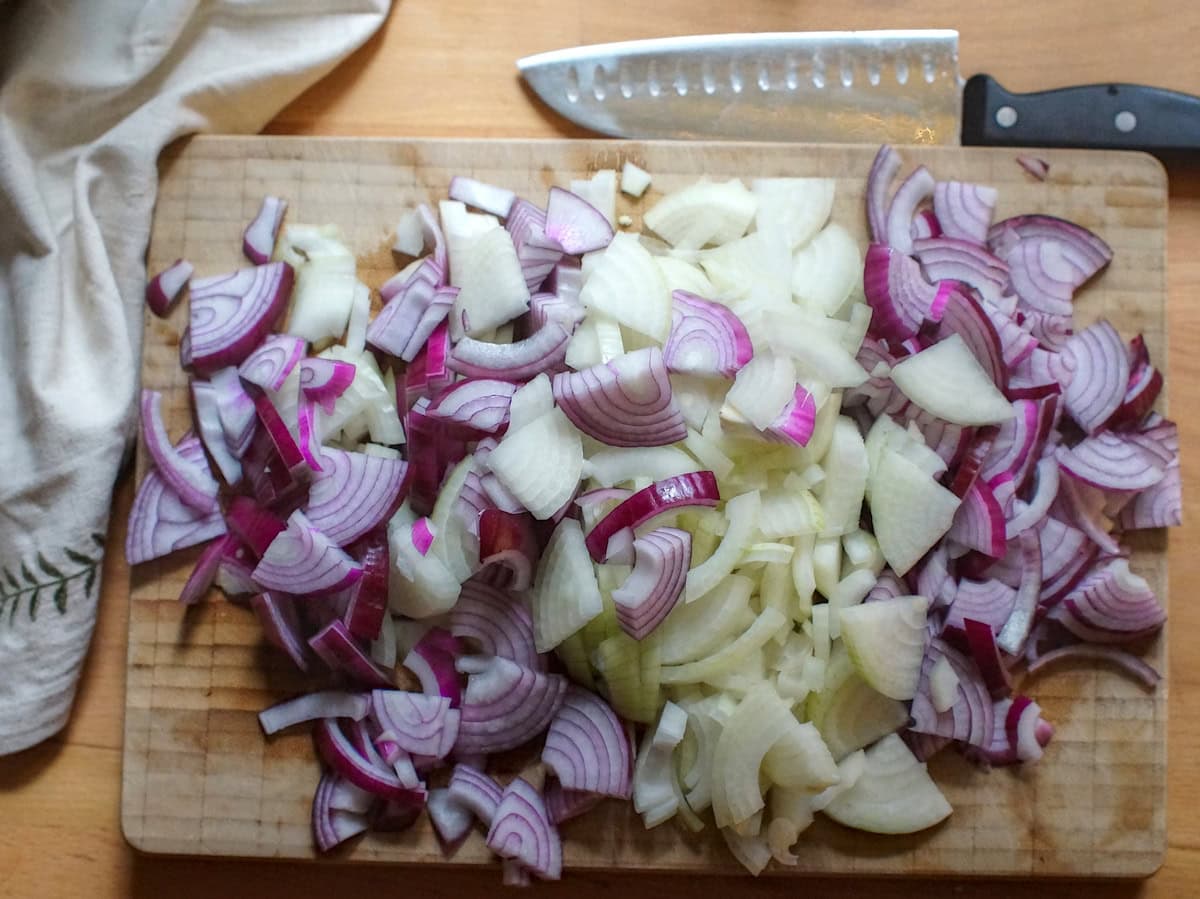
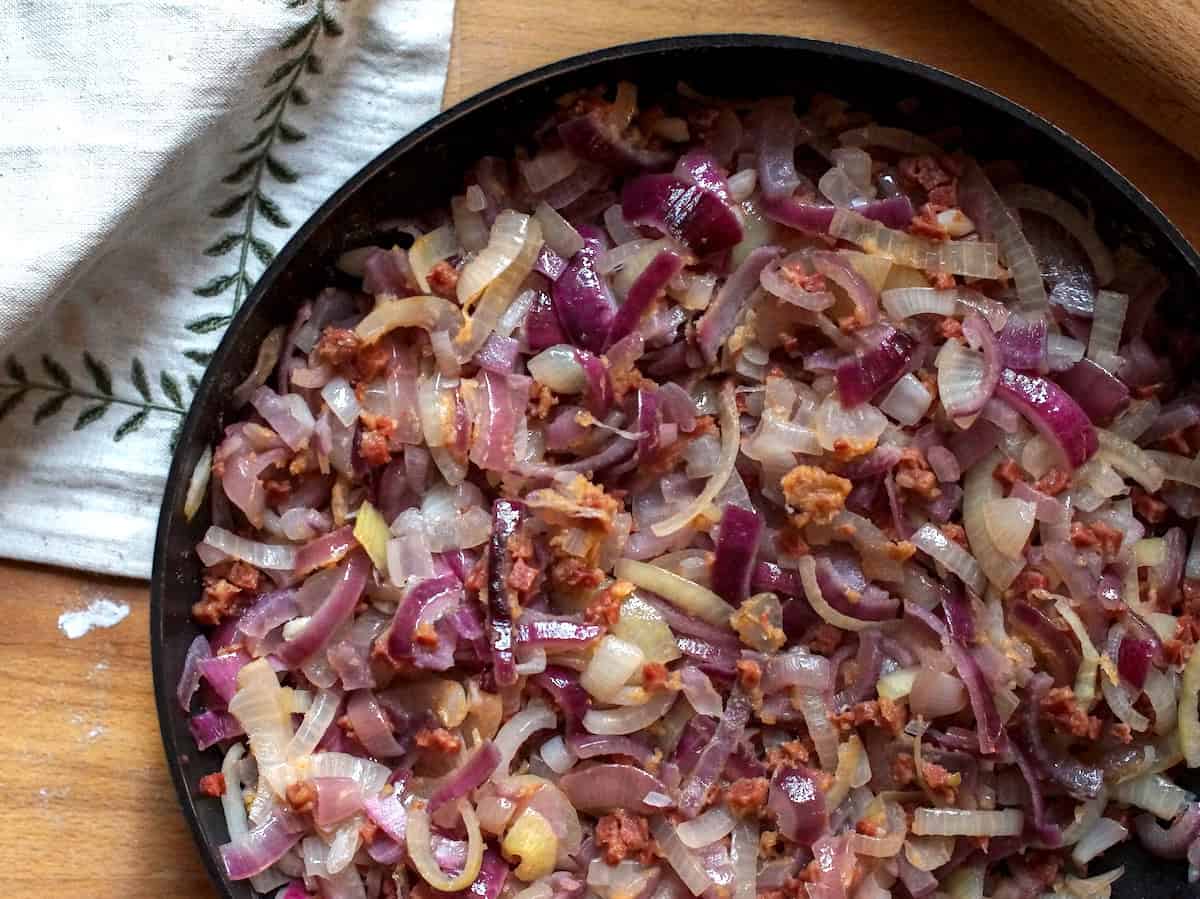
03
Roll Out the Dough
Preheat the oven to 180°C (375°F). Grease a 9-inch deep dish pie dish with butter.
Lightly flour your work top and turn out the puffy dough.
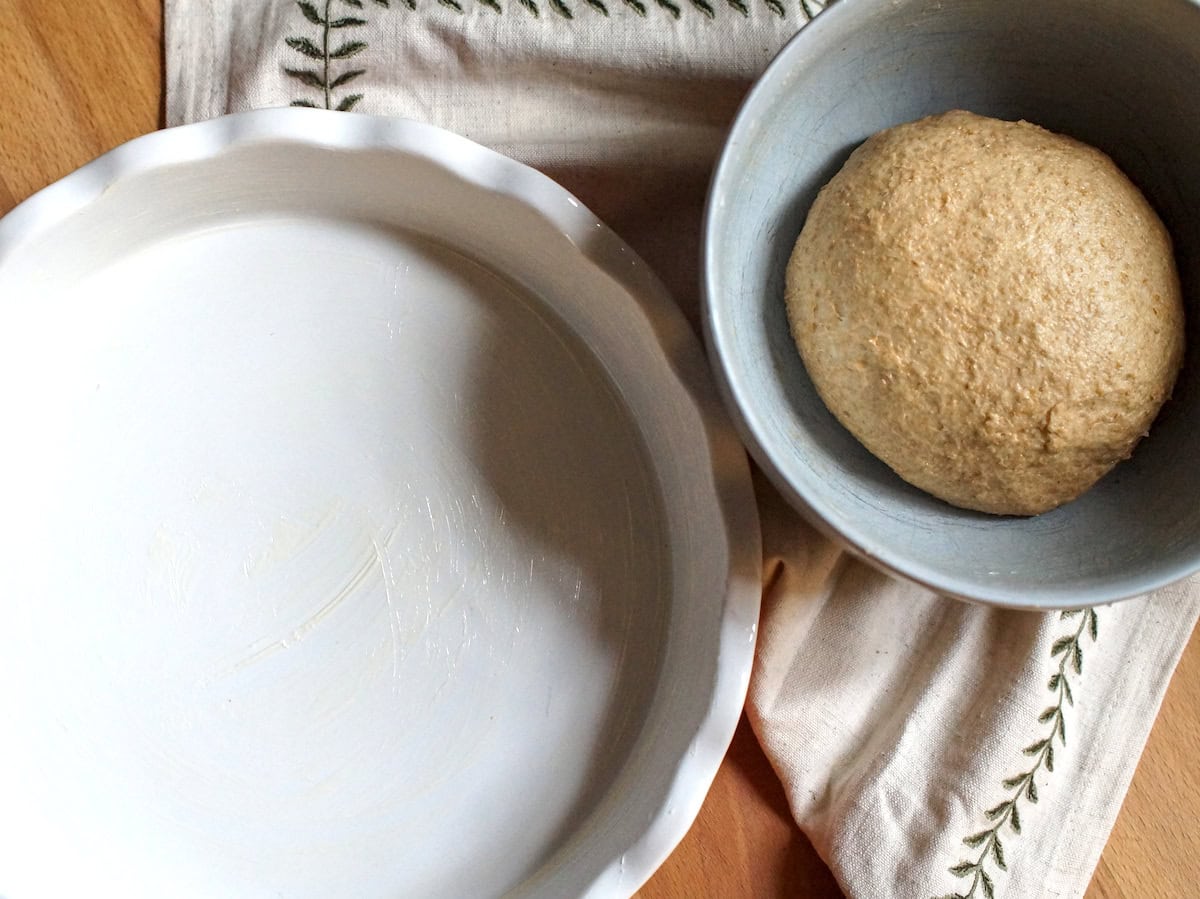
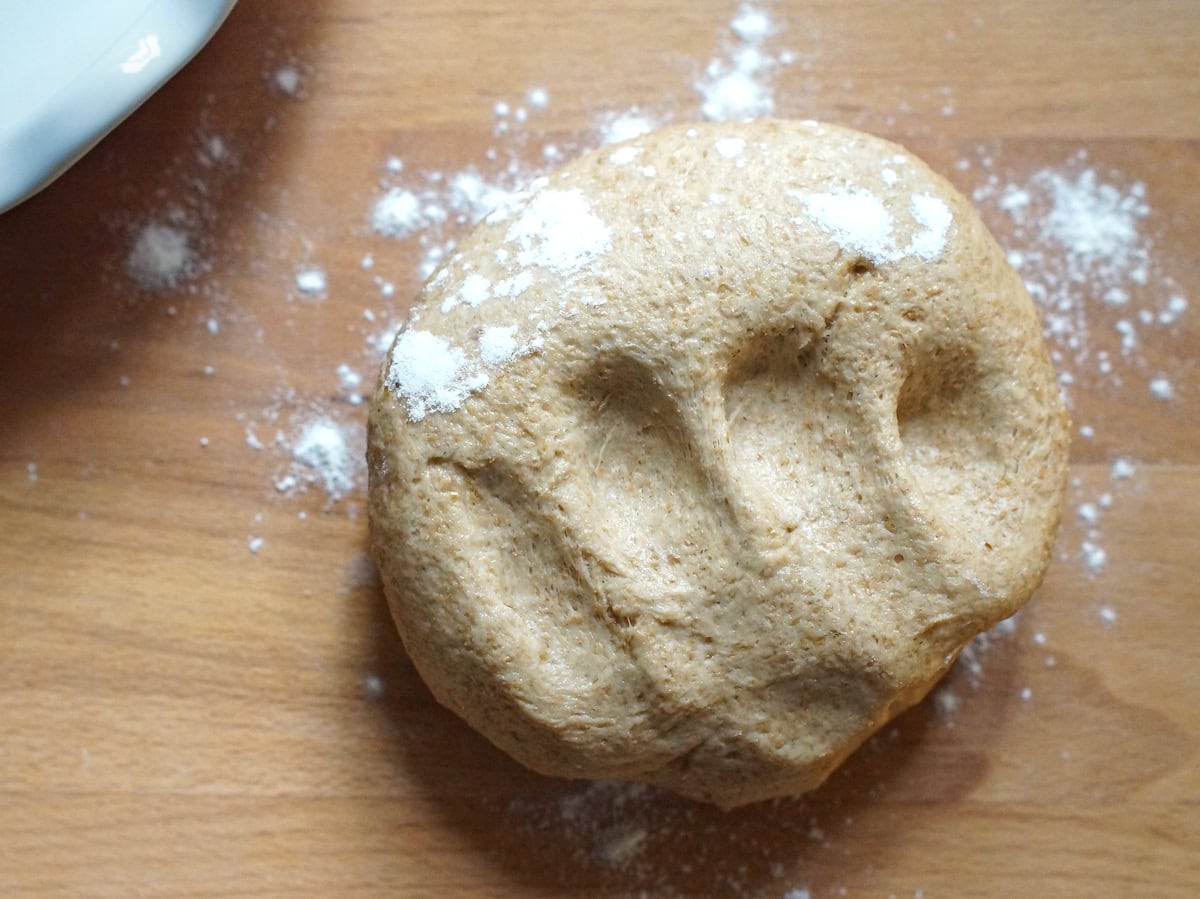
Roll it out to size and carefully lift it into your pie dish. Press in the edges and the sides, and poke the bottom a couple of times with a fork. Cover the pan and let the dough puff up again.
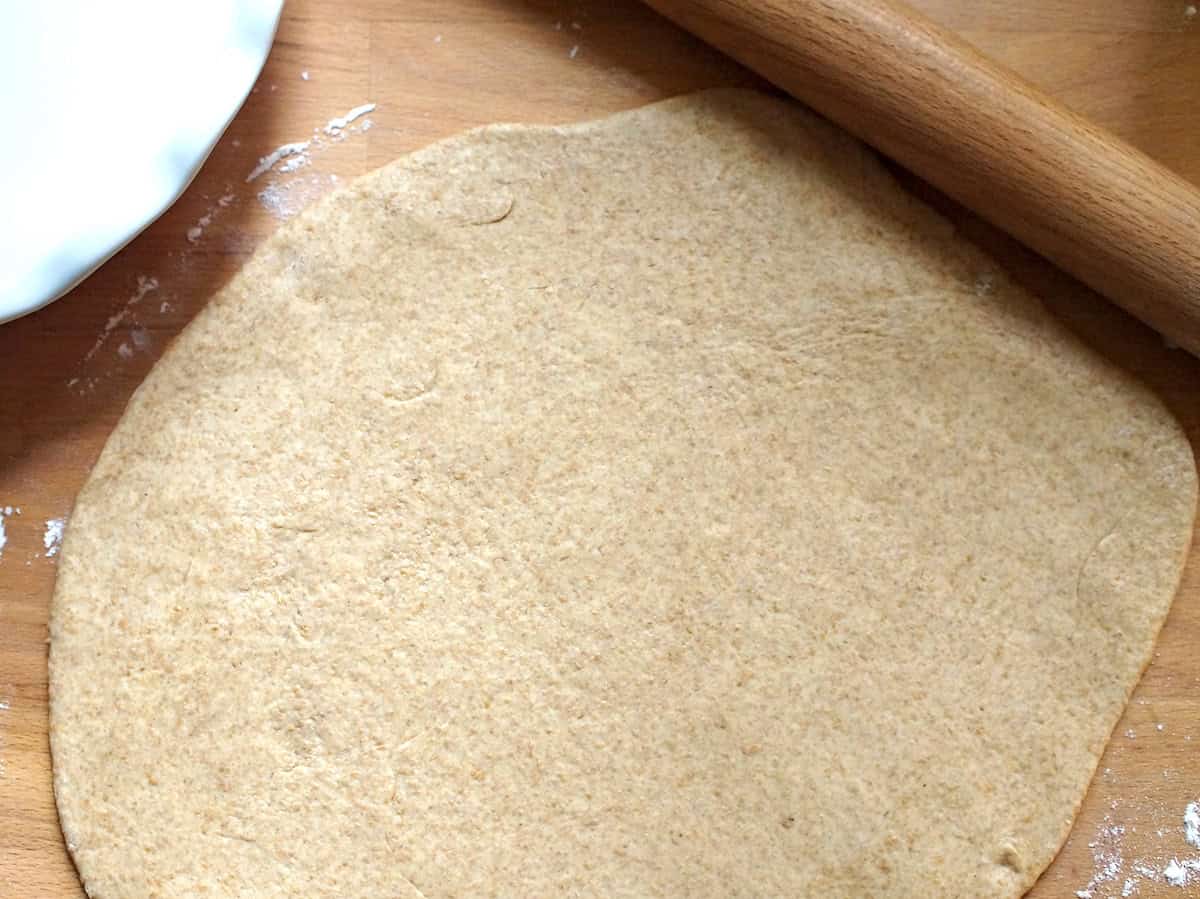
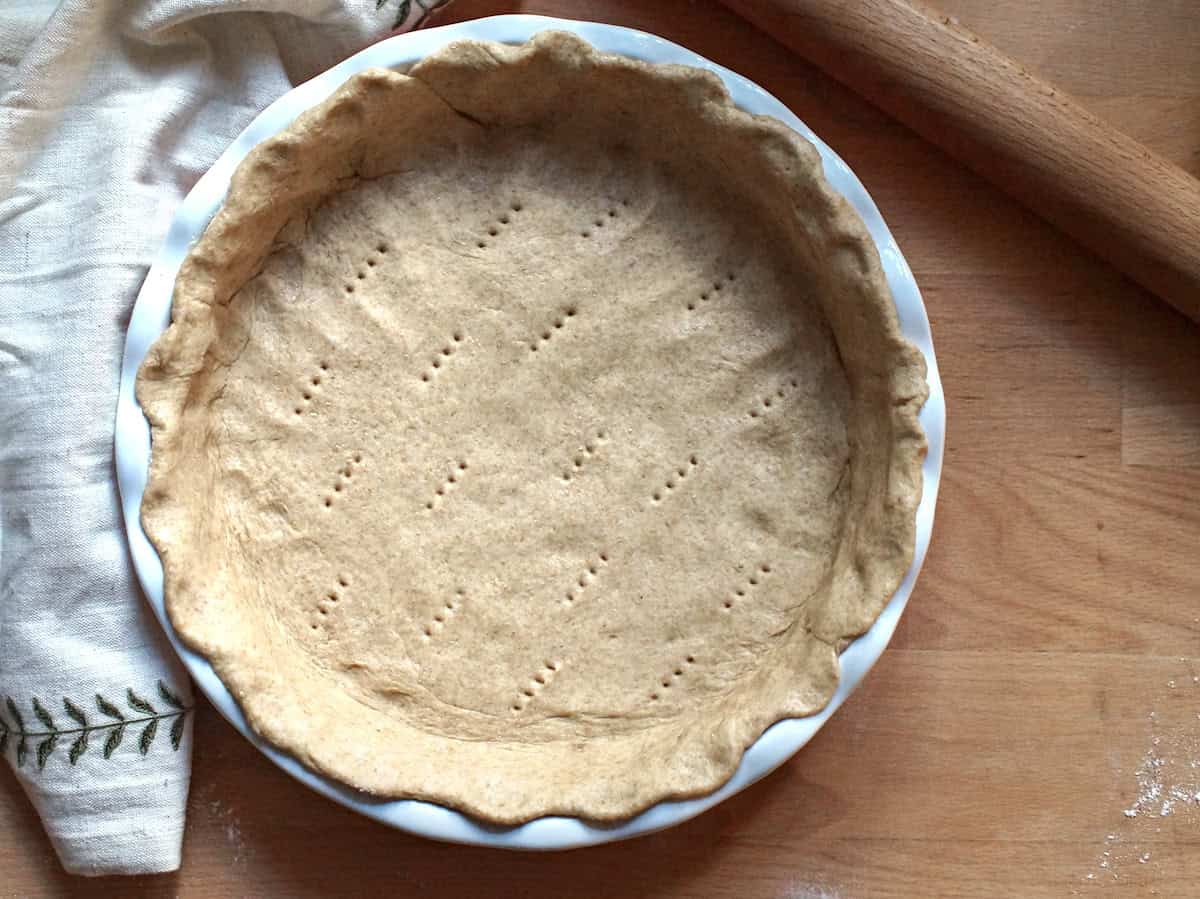
04
Make the Custard and Assemble the Pie
In a large bowl, mix together eggs, (sour) cream, salt, pepper, nutmeg and ground caraway seeds (if using). Gradually add the cooked onions into the egg mix and stir between additions.

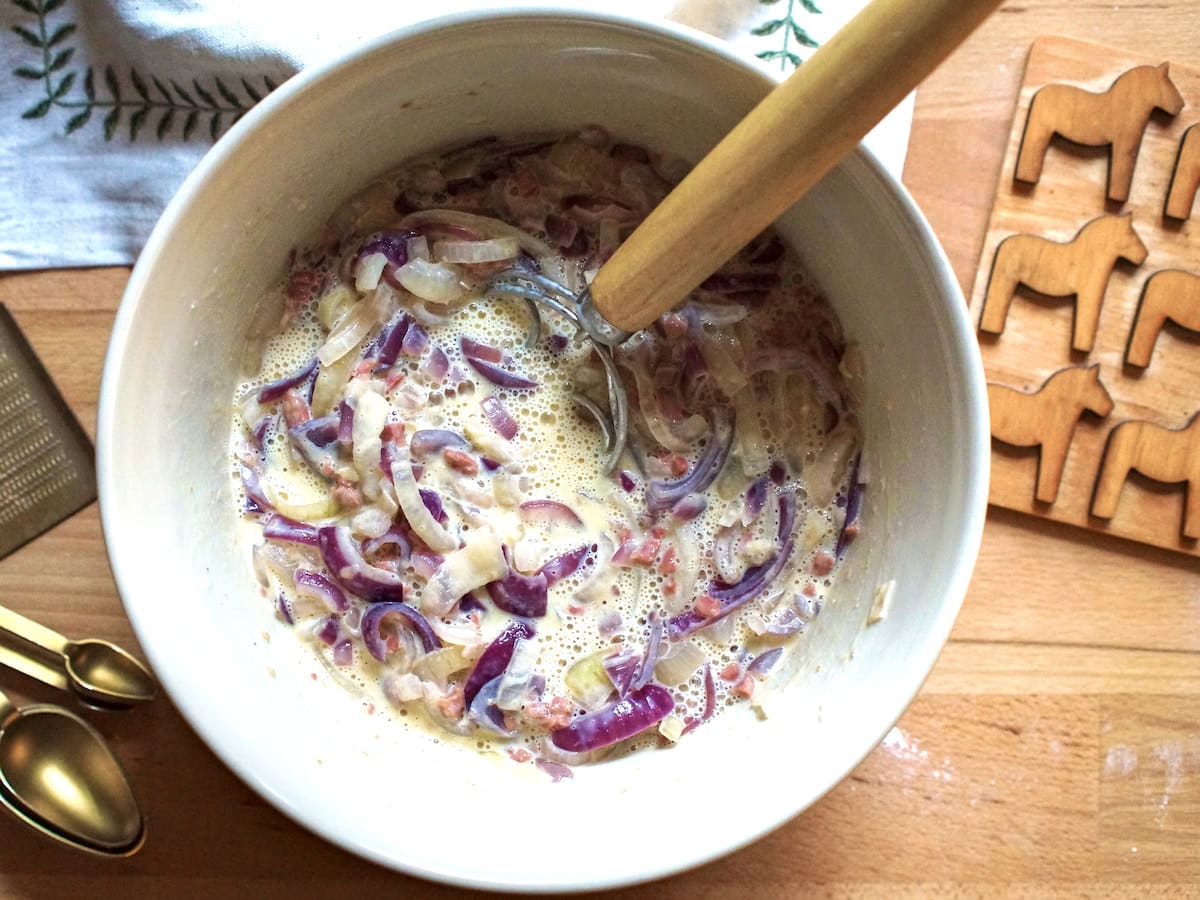
Ladle the filling into the prepared crust. Bake for 50-60 minutes, or until the centre is set and firm to the touch. (It’s a softer-than-usual filling and it will likely still stick to a tooth pick a little. That’s fine.)
Let the pie cool down for at least 30 minutes, so the filling has time to settle a little more.

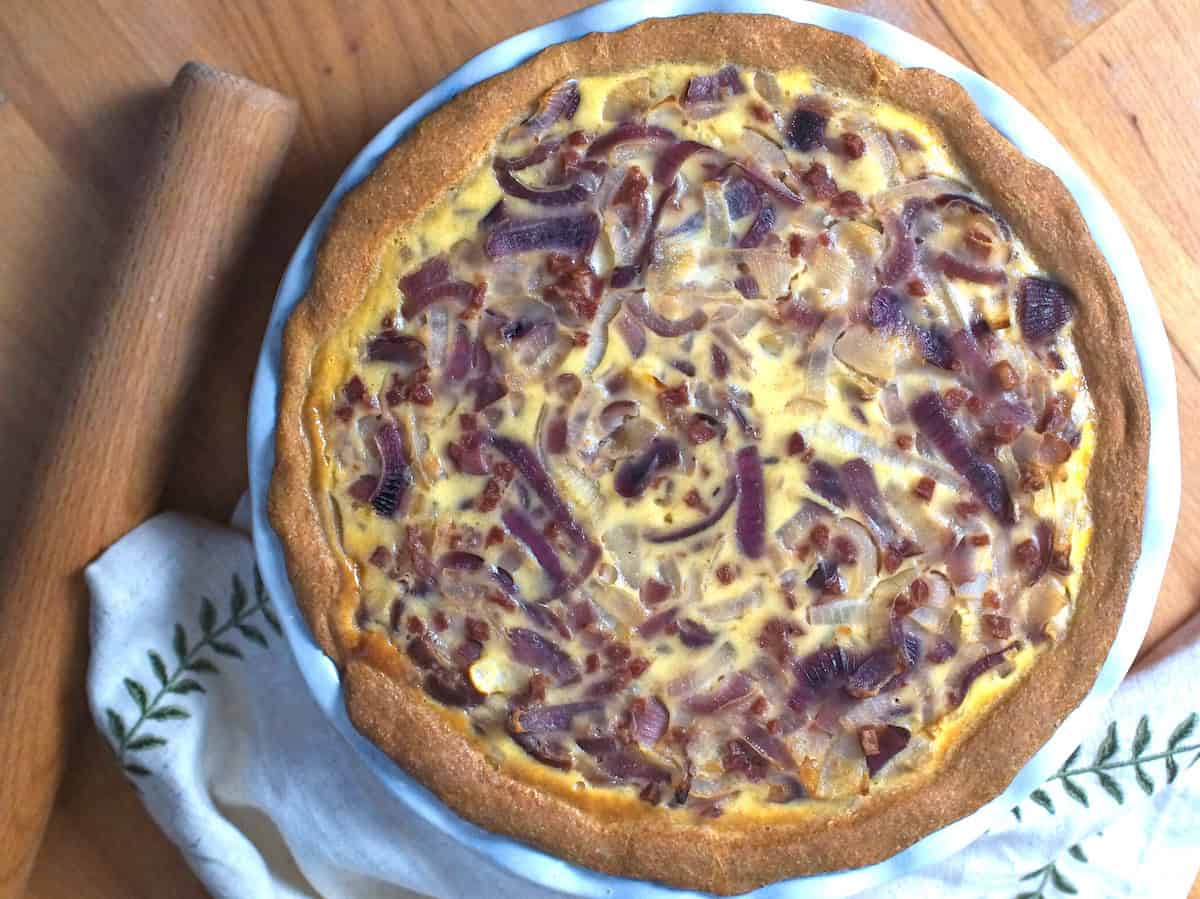
Tips
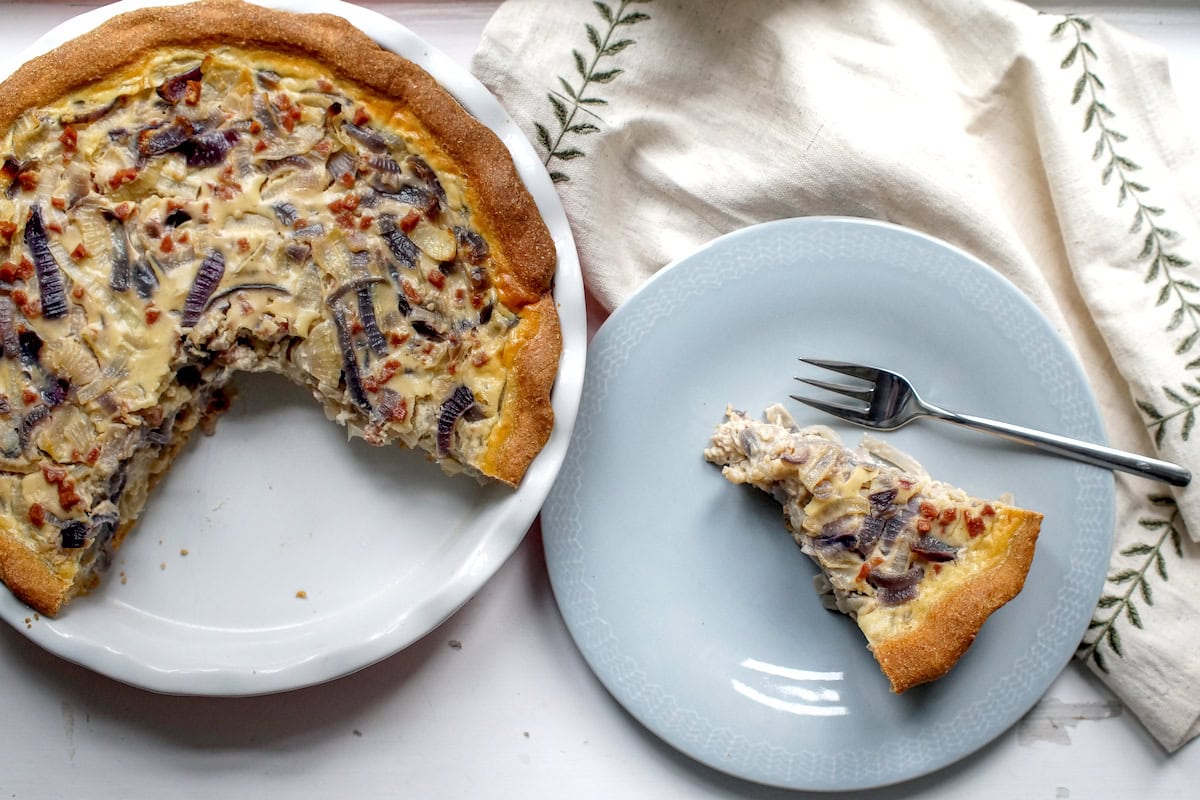
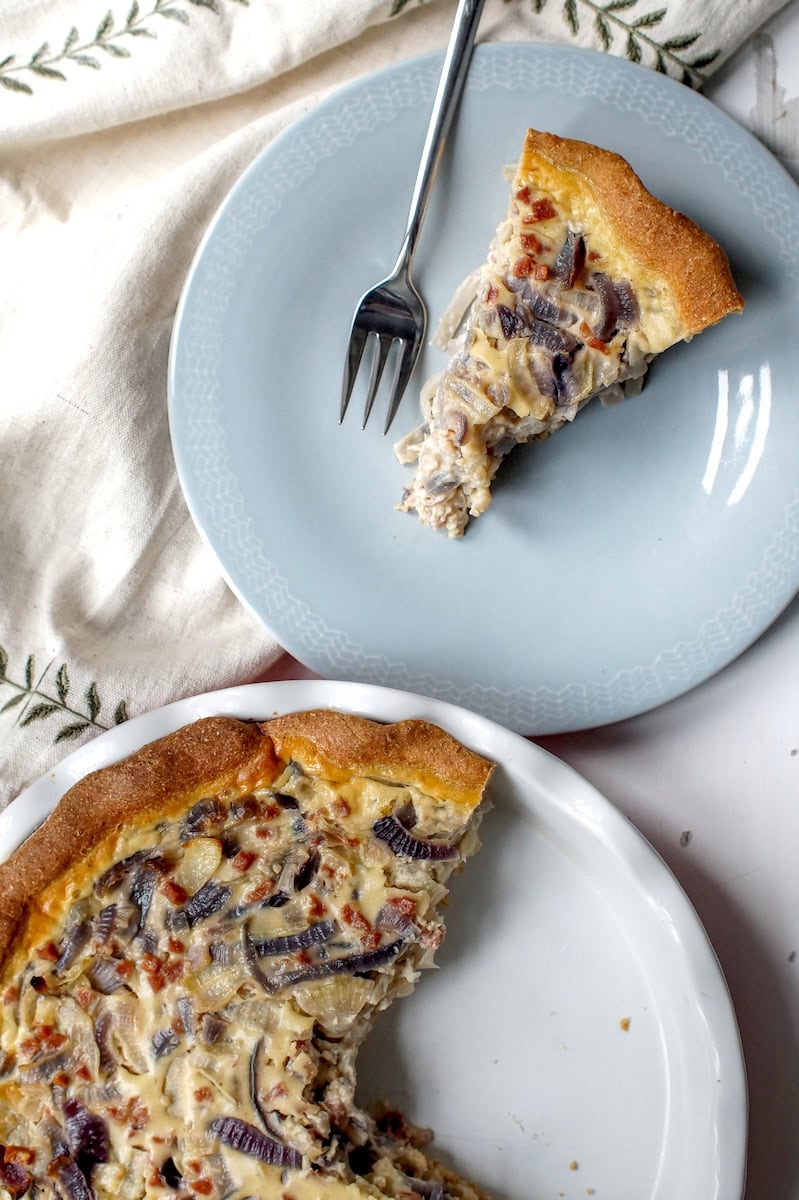
How to Serve
Zwiebelkuchen is best served warm, not hot. Leftovers reheat beautifully and make a satisfying breakfast, brunch, or lunch.
This humble yet hearty dish is traditionally enjoyed in early autumn, when onions are sweet and the air starts to cool. It pairs wonderfully with a glass of wine or crisp cider, alongside a salad of sharp or slightly bitter greens like arugula or radicchio (a red Italian chicory with a pleasantly bitter bite). For a non-alcoholic option, a well-fermented, slightly sour kombucha complements it beautifully — especially if it’s homemade.
When the days get shorter and you’re craving something extra cozy, serve it with a hot bowl of pumpkin soup. We had ours last night with a steaming pot of sauerkraut — super simple, but absolutely delicious!
How to Store and Freeze Zwiebelkuchen
Leftovers can be stored in the fridge, well covered, for up to 3 days.
I don’t usually like freezing egg-based dishes, so I haven’t personally tried freezing this one. However, it seems like a good candidate — the crust is meant to be soft, and the filling contains a bit of flour, which should help prevent separation.
I wouldn’t recommend freezing individual slices because of the soft filling, but freezing the whole pie for up to 2 months would likely work fine. If you do freeze it, defrost overnight in the fridge and reheat in a medium oven until warmed through.
If you make this German Onion Pie…
I’d love to hear how it turned out. Did you love it? How courageous where you in the caraway department? Let me know!

P.S. If you’ve still got room for dessert, how about a scoop of ice cream?
Enjoy!
Zwiebelkuchen — German Onion Pie with Freshly Milled Flour
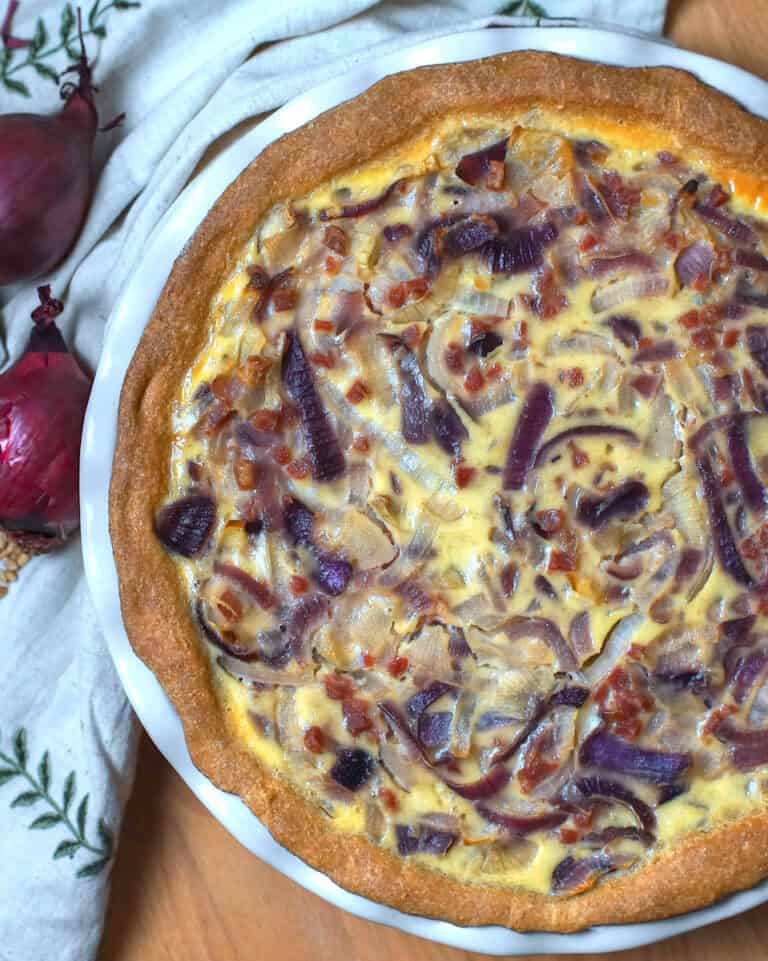
Equipment
- 9-inch (23cm) Deep Dish Pie Dish - (Or use a 32cm (12.5-inch) ceramic tart pan and adjust the baking time.)
- Large Frying Pan
- Rolling Pin
- Large Bowl and Whisk
Ingredients
Dough Ingredients
- 225 g freshly milled soft wheat flour - roughly 1¾ cups
- 3.5 g instant yeast - ½ sachet
- 1 tsp salt
- 160 ml whole milk - ⅔ cup
- 40 g softened butter - 3 tbsp
Filling Ingredients
- 1 kg red or white onions (or a mix) - 2.2 lbs
- 2 tbsp butter
- 100 g diced bacon - ~½ cup
- 2 tbsp flour
- 3 large eggs
- 200 g sour cream - ¾ cup (use heavy cream or crème fraîche instead)
- 2 tsp salt
- pepper
- a few gratings of nutmeg
- ¼-1 tsp ground caraway seeds - or 1-2 tsp whole caraway seeds to scatter across the top
Instructions
Make the Dough
- Weigh out soft wheat berries and mill them on the finest setting of your grain mill.
- Add the salt, sugar and instant yeast, and give the dry ingredients a quick mix before you add the water and bring everything together into a shaggy dough.
- Knead in the softened butter until fully incorporated and the dough turns soft and elastic. It will be sticky — that’s okay! Use a bench scraper to gather the dough into a ball, place it back in the bowl, cover, and let it rise for 30-60 minutes.
Cook the onions
- Peel and chop the onions and dice the bacon if necessary. In a large frying pan, heat the butter over medium low heat. Add the onions and bacon, and cook them low and slow until the onions turn soft and sweet, but not mushy or browned. Once done, stir in the flour and let everything cool off a little.
Roll Out the Dough
- Preheat the oven to 180°C (375°F). Grease a 9-inch deep dish pie dish with butter.
- Lightly flour your work top and turn out the puffy dough. Roll it out to size and carefully lift it into your pie dish. Press in the edges and the sides, and poke the bottom a couple of times with a fork. Cover the pan and let the dough puff up again.
Make the Custard and Assemble the Pie
- In a large bowl, mix together eggs, (sour) cream, salt, pepper, nutmeg and ground caraway seeds (if using). Gradually add the cooked onions into the egg mix and stir between additions. Ladle the filling into the prepared crust.
Bake the Pie
- Bake for 50-60 minutes, or until the centre is set and firm to the touch. Let the pie cool down for at least 30 minutes, so the filling has time to settle.
Notes
- Use a vegan, diced bacon alternative for a vegetarian pie.
- With regular bacon, scatter the cubed bacon bits across the top. With a leaner cut (or veggie bacon), you’ll want to cook the bacon bits with the onions instead.
- Use a very sharp knife to slice the onions, to avoid unnecessary tears.
- Use at least the minimum amount of caraway listed. It won’t be enough to stand out, but it will help with digestion.
- Zwiebelkuchen pairs beautifully with a glass of wine or cider, a side of slightly bitter or sharp greens, or a steaming pot of soup.
- Leftovers can be stored in the fridge, covered, for up to 3 days.
Recipe FAQs
